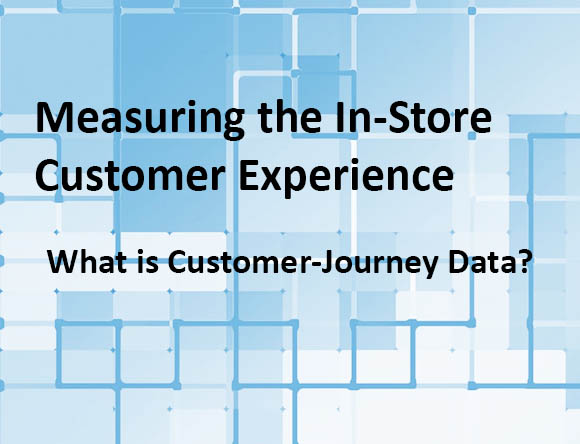The New Frontier in Customer Journey Optimization – Measuring the In-store Experience
The New Frontier in Customer Journey Optimization – Measuring the In-store Experience
By Gary Angel
|January 15, 2017

What is In-Store Customer Journey Data?
Analytics professionals love data and technology. So it’s easy for us (and I use “us” because I completely self-identify in both the category of analytics professional and someone who loves data and technology) to get excited about new data sources and new measurement systems – sometimes without thinking too carefully about what they are for or whether they are really useful. When I first got interested in the technologies to track in-store customer journeys, I’ll admit that its newness was a big part of its appeal. But while newness can get you through a “first date”, it can’t – by its very nature – sustain a relationship. In the last few months, as I’ve worked on designing and building our initial product, I’ve had to put a lot of thought into how in-store measurement technology can be used, what will drive real value, and what’s just “for show”. In my last post, I described using the “PoS Test” (asking whether, for any given business question, in-store customer journey data worked better or differently than PoS data) to help choose the reports and analysis that fit this new technology. But I can see that in that post I put the cart somewhat before the horse, since I didn’t really describe in-store customer journey data and it’s likely applications. I’m going to rectify that now.
To measure the in-store customer journey you track customers as they move through your physical environment. The underlying data is really a set of way-points. Each point defines a moment in time when the customer was at a specific location. This is the core journey measurement data.
By aggregating those points and then mapping them to the actual store layout, you have data about how many people entered your store, where they went, and how long they spent near or around any store section. This mapping to the store is the point where concerns about accuracy crop up. After all, the waypoints themselves don’t have any meaning. It’s only when they are overlaid on top of the store that they become interesting. The more precisely you an place the customer with respect to the store, the more you can do with the data.
By tracking key waypoints along the journey (such as dressing rooms or registers), the basic journey data can be used to help build an in-store conversion funnel. Add Point-of-Sale data (and you’d be crazy not to) and you have the full conversion funnel at a product level and all the experience that went with it. For those coming from a digital world, this may feel like the complete journey. It has everything we measure in the digital world and can support all of the same analytic techniques – from funnel analysis to functional and real-estate optimization to behavioral segmentation. But in physical retail, there’s an additional, critical component: measuring staff interactions. It’s hard to overstate the importance of human interactions in physical retail; so if you want to really map the in-store customer journey you have to add in associate interactions. For any given customer journey, you’ll want to know whether, when, how long and with whom a customer interacted.
For most stores, this combination of journey waypoint data, store mapping, PoS data, and staff interaction data is the whole of customer journey data and it’s powerful. At Digital Mortar, though, we’re trying to build a comprehensive measurement backbone for the store that includes detailed digital experiences in store (mobile, digital signage, and specialized in-store experiences) AND a set of variables that encompass the background environment for a customer visit.
In-store digital experiences are a key part of a modern retail customer journey and if you can’t integrate them into your omni-channel picture of a customer you don’t have key ingredients of the experience. I also happen to believe that custom digital experiences will be a crucial differentiator in the evolution of retail experience.
What about the background environment – what does that mean? There’s a lot more environment in physical retail than there is in digital. Weather, for example, is a critical part of the background environment – impacting store traffic but also dramatically changing in-store journeys and purchase patterns. Other important environment variables include store promotions (local and national), advertising campaigns, mall traffic and promotions, road traffic, events, what digital signage was showing and even what music was playing during a customer visit. The more environment data you have, the better chance you have of understanding individual customer journeys and figuring out what shapes them in meaningful ways.
Summing Up
The in-store customer journey data begins with the waypoint data. That’s the core data that describes the actual customer experience in the store. To be useful, that data has to be mapped accurately to the store layout and the merchandise. You have to know what’s THERE! Integrating PoS data provides the key success metrics you need to understand what parts of the experience worked and to build full in-store funnels. Associate interactions data adds the human part of the experience and opens the door to meaningful staffing optimization. And the picture is completed by adding in digital interaction data and as much background data as you can get – particularly key facts about weather and promotions. Taken together, this data provides remarkable insight into the in-store funnel and customer experience. And to prove it, my next post will tackle the actual uses of this data and the business questions it can (and should) answer!